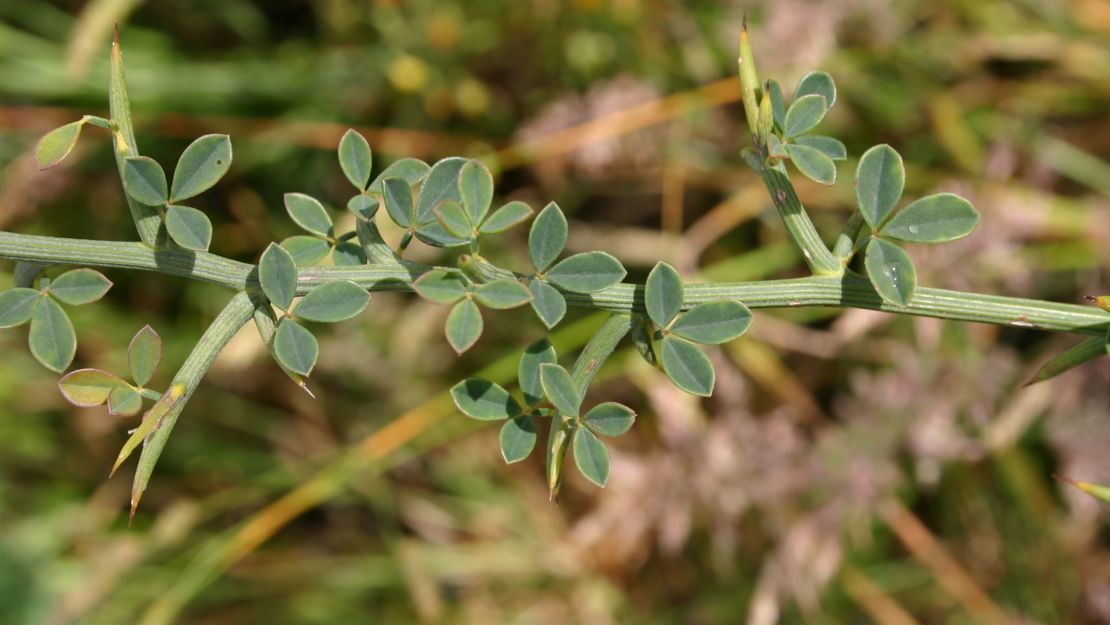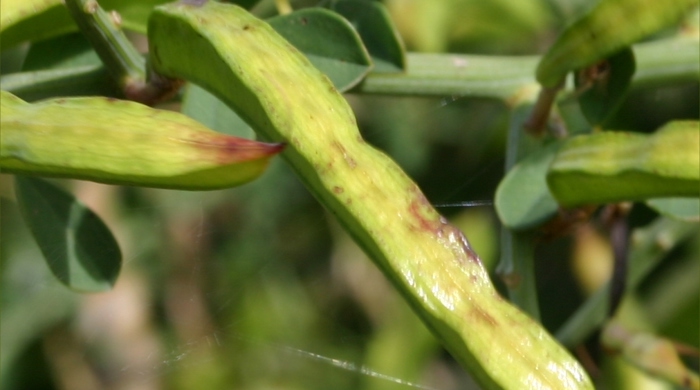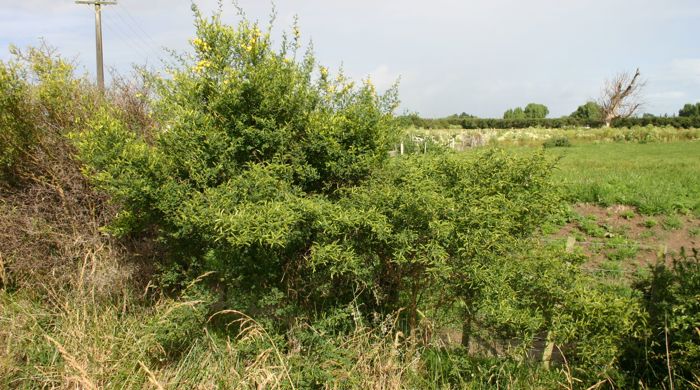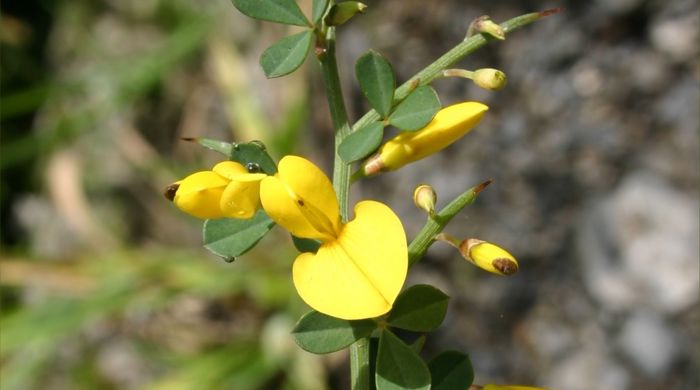Calicotome spinosa
Spiny broom
Family: Leguminosae
Origin: Mediterranean

Regional Pest Management Plan (RPMP) status
- Whole region — Sustained control
- Hauraki Gulf Controlled Area Notice pest
General description
Many-branched perennial shrub < 3 m tall. Stems bear spines < 4 cm long. Leaves comprise three leaflets < 12 mm long. Flowers are yellow, < 15 mm long and borne in spring-summer. Seed pods are < 4 cm long, flattened and hairless, with a small spine at the tip.
What you need to know
To help protect our environment:
- You must not breed, distribute, release or sell spiny broom within the Auckland region.
- You must not plant spiny broom within the Auckland region, unless you are transferring an existing plant on your land to another location within the boundaries of the same property.
- You must destroy any spiny broom on land that you occupy if it has been planted in breach of the above rules and you are directed to do so by an authorised person.
Habitats
Rocky soils, grassland, pasture, open woodland, roadsides, disturbed areas, wasteland.
Dispersal
Seeds dispersed by explosive dehiscence and contaminated soil on animals. Human-mediated dispersal through contaminated soil on machinery and vehicles and dumping of garden waste.
Impact on environment
Forms dense stands, excluding and competing with native vegetation. May reduce pasture grazing potential and outcompete plantation tree seedlings. Nitrogen fixer. May facilitate other exotic species.
Control
Site Management
Follow up treated areas 3 times per year. Encourage natural regeneration of native plants or replant treated areas where possible after 2-3 treatments to establish dense ground cover and minimise reinvasion.
Recommended approaches
Physical control
Method: Dig out.
Plant parts requiring disposal: All parts.
Disposal options: Remove to greenwaste or landfill.
Biocontrol
Biocontrol is currently not available for this species.
Community agrichemical control recommendations
Certified Handler/Experienced agrichemical user: Foliar spray with 200ml glyphosate green per 10L of water and 20ml penetrant when in full leaf or foliar spray with 5g metsulfuron-methyl per 10L of water and 20ml penetrant.
Safety notes
Plant has spines.
Caution: When using any herbicide or pesticide please read the label thoroughly to ensure that all instructions and safety requirements are followed.






